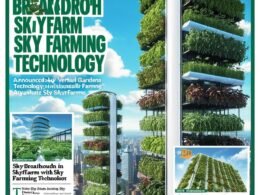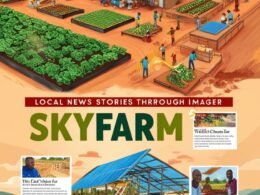A Plea of the Ghanaian Soil: Destroy Me in a Day, Reclaim Me in Thousand Years
By Gabriel Adukpo
“The rich green hills break down…They grow red and bare; they cannot hold the rain…The streams are dry…too many cattle feed upon the grass…The earth has torn like flesh…the soil cannot keep them anymore.” (Alan Paton in Cry, the Beloved Country)
THE above description holds for vast areas of arable land in Ghana.
The soil, vegetation, and water bodies are key natural resources that constitute the agricultural environment. Plants and animals from which we obtain food and raw materials depend on these resources. Human beings cannot survive without them.
The major environmental issue related to farming is the accelerated physical and chemical degradation of land quality. This problem has been worrying us for some time now. However, the increasing demand for agricultural output has worsened the deterioration of farmlands, thus calling for a closer look at our farming practices.
Educating farmers on land use practices has been an integral part of the work of agricultural extension and researchers. These officers, among other things, train farmers in maintaining soil fertility, soil conservation, water resource management, integrated pest management, and promotion of agroforestry in all ecological zones of the country.
But the wanton destruction of the land through illegal mining, known as galamsey in Ghanaian parlance, has angered the soil so much that she wants to use this medium to air her frustration.
Narrative by the soil
I am the Ghanaian soil. At the moment, I am sick. I do not want citizens to cry one day like Alan Paton wrote in his book, “Cry, the Beloved Country.”
Before you appreciate my difficulty, you must know what I am made of, how I am formed, the gestation period, and the cost of bringing me back to good health.
I am the Ghanaian soil. I am the finely divided material covering the surface of the land. I am of interest to many people, and for that matter, they look upon me from different viewpoints. The engineer is concerned about road and building construction. To the historian, I am a record of the past.
Geologists, ecologists, agriculturists, industrialists, and others have different mindsets of the same person—the soil. However, my importance as a medium of plant growth was recognized by humankind thousands of years ago.
People will laugh when I say that I am a living entity. I harbor many different animals in my fold—earthworms, ants, beetles, and many tiny animals that are so small they cannot be seen with the naked eye. If healthy, I am high in organic matter and rich in nutrients that plants can use as food. I should be deep enough for plant roots to grow properly. I am a mixture of fine (clay) soil particles and coarse particles (sand and silt). I contain lumps and clumps of different sizes, porous enough to contain air and water, so the surface does not seal after rain.
I am the Ghanaian soil. No living person knows when I was born. Nonetheless, scientists trace my ancestry to different types of rocks, termed parent material. According to the scientists, my gestation period is very long, irrespective of the climatic factors of a particular area, living organisms, and topography. They claim that there is a process called weathering, which precedes all other processes leading to my birth.
In the conservative estimation of scientists, only one millimeter of already existing soil can be deposited on bare rock or barren land by wind or water in a given year. It means that within ten years, I can only grow to a depth of one centimeter and a depth of one meter in ten times a hundred years. The process is longer when the parent material expands, contracts, and breaks under extremely high and low temperatures to start the process of soil formation.
I am the Ghanaian soil. Losing me will have dire consequences for food security for the entire population. Even though the campaign against bushfires is far from succeeding, I know that extension officers, researchers, and some farmers are trying hard to massage my ailing parts to obtain good harvests.
But these galamseyans (illegal miners)—these galamseyans are my problem. Much has been said about the ill effects of illegal mining, but the perpetrators are notoriously adamant. I, therefore, urge the authorities and others not to relent in their efforts to fight the menace of galamsey.
When water bodies are polluted, our fear is that we will import drinking water sooner rather than later. The question is, can we import the soil? Think about this.
Fortunately, it is possible to make sick soil healthy again. Please see the experts.
I heard that Ghana will need 250 million dollars or Ghanaian cedis to reclaim badly damaged galamsey sites. That amount can provide one constituency with one million and one district with one factory.
The point is that soil restoration can take a long time, and reclamation can be costly.
Stop galamsey now!
I have spoken.









